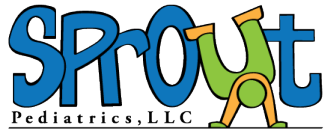 Reading to babies and toddlers plays a significant role in future development of Speech and Language skills. Many adults know it is beneficial to read to children as preschoolers, but might not realize all the learning that happens as one reads to toddlers and even babies. Reading to babies creates connections in the brain’s circuitry that enables future learning. Below are just a few things every parent, grandparent, child-care provider and adult should know and encourage as they interact with young children.
Reading to babies and toddlers plays a significant role in future development of Speech and Language skills. Many adults know it is beneficial to read to children as preschoolers, but might not realize all the learning that happens as one reads to toddlers and even babies. Reading to babies creates connections in the brain’s circuitry that enables future learning. Below are just a few things every parent, grandparent, child-care provider and adult should know and encourage as they interact with young children.
Do you remember the old saying that “Good habits are caught rather than taught!” That holds true for reading to babies and toddlers. As one reads to babies and toddlers, there are lots of subtle pre-readiness skills little ones are picking up on and beginning to do without the adult “teaching” it to them. For example, as they are read to, they learn how to hold a book right side up or to read from left to right by watching one turn the book or point to the words at the bottom of the page. But did you know they also learn a lot about speech and language too!
As parents read with their baby, the baby should be given an opportunity to follow simple directions. While reading a board book, hold the pages down except for the next page. As one bends the book slightly, the page will pop up. Say, “Turn the page!” and help the baby use their hand to turn the page. Also read books with textures and encourage babies to “pat the bunny,” “feel the cow,” and “touch the dog.” After reading and instructing them enough, the toddlers will begin to follow other simple directions around the house as well.
One of the first things children hear, as they listen to others talk around them, is vowel and consonant sounds as well as inflection of voice. As babies and toddlers listen to you read, they hear inflection in your voice! They hear excitement as you say “Wow!” “oooh!” and they hear how your voice goes up when you ask a question.
Babies learn to associate sounds with pictures and names with pictures. For instance, while reading books about farm animals, babies see similar pictures and hear oink, oink or mooo moooo over and over. Over time, a synapse or brain connection is made between neurons and they begin to know the pig says oink and the cow says mooo. Later a parent can ask, “What does the pig say?” and the child will answer correctly. Then as further learning and understanding takes place, a parent can ask, “What animal says moo?” and the child will answer, “A cow.”
Reading with babies and toddlers gives adults an opportunity to bond. Reading leads to talking about what one sees in pictures, what happens in the story and later what we think about the ideas presented by the author. As we read we talk. Toddlers learn how to take turns talking: first listening and then responding. Quality communication always consists of these two participants: a listener and a speaker. Therefore, adults have an opportunity to model and begin a relationship with their child as they share moments. Future opportunities to influence the child about important concepts and character skills also abound.
 Finally, choosing books that are centered around baby games and nursery rhymes helps the baby begin to play and interact and memorize strings of words. Singing is vitally important to memorization and learning rote skills such as counting and the alphabet. These two books are just a few that one may choose to check out from the library or purchase, but variety is key to keeping toddler’s interest. Log onto this website for further tips on reading with children.
Finally, choosing books that are centered around baby games and nursery rhymes helps the baby begin to play and interact and memorize strings of words. Singing is vitally important to memorization and learning rote skills such as counting and the alphabet. These two books are just a few that one may choose to check out from the library or purchase, but variety is key to keeping toddler’s interest. Log onto this website for further tips on reading with children.
Tips for choosing books:
Choose books that are plastic or thick board books for babies as they tend to mouth everything!
Choose books with one photo per page of actual objects. (Drawings are often not recognizable by young)
Choose books about family, animals and household objects for babies through 12 months.
Continue to read the books listed above, but add books about cars, trucks and everyday activities & places.
Choose books that move quickly! about a minute long for babies through 12 months and 2 minutes in length for toddlers.
Toddlers also enjoy books that do something! A flap book, texture book that you can feel or a puppet book like the one pictured here.
Welcome To Sprout!
- Innovative Therapy
- Engaging Education
- Cultivating Community
- Pediatric Therapy
Phone & E-mail
We look forward to hearing from you.
